munchee-the-sec-and-utility-tokens
.pdf
keyboard_arrow_up
School
University of Ottawa *
*We aren’t endorsed by this school
Course
ADM3755
Subject
Business
Date
Feb 20, 2024
Type
Pages
15
Uploaded by rickthesizzler2631 on coursehero.com
Munchee, the SEC, and Utility Tokens Author:
John V. Eagan Pub. Date:
2019 Product:
SAGE Business Cases DOI:
https://dx.doi.org/10.4135/9781526467843 Keywords: utility, security and classification, security, Securities and Exchange Commission, ethers, coining, restaurants Disciplines: Business & Management, Entrepreneurship, Strategic Management, Entrepreneurial Finance, Business Law Access Date: January 4, 2023 Publishing Company: SAGE Publications: SAGE Business Cases Originals City: London Online ISBN:
9781526467843 © 2019 SAGE Publications: SAGE Business Cases Originals All Rights Reserved.
1. 2. Abstract Munchee, Inc. is a company that created a peer-to-peer food review platform based on blockchain technology. Food reviewers were to be compensated with tokens that could be used at restaurants. In July 2017 the Security and Exchange Commission (SEC) released guidance on initial coin offerings (ICOs) that indicated that some tokens issued in an ICO may be clas-
sified as a security. In their white paper, Munchee argued that their tokens were utility tokens and not a security under the Howey
test. Munchee launched a token offering in October 2017. The SEC contacted Munchee and Munchee ceased their ICO and returned investor funds. The SEC issued a cease-and-desist order that indicated that Munchee had violated securities laws in their token offering. The primary issue in this case is how students can craft a token to satisfy the “utility token” exception to classifying a blockchain token as a security. Case Learning Outcomes By the end of this case study, students should be able to: understand the application of the Howey
test by the Security and Exchange Commission (SEC) to cryptographic tokens; and understand the issues raised by the “utility token” exception to classification of a token as a security. The Resources tab includes a glossary of technical terms. Background Munchee, Inc., a Delaware-licensed corporation based in San Francisco, was founded in 2015 to build the Munchee network, a food review platform. Munchee described itself in a public announcement in BitcoinTalk as “Yelp meets Instagram.” Munchee is addressing the USD 54.8 billion marketspace of people eating out. The primary competition in the food review business at the time of the Munchee initial coin offering (ICO) was Yelp, founded in 2004. Yelp, a USD 3.2 billion company with USD 704 million in annual revenue, had 135 million cumulative reviews as of August 2017. Foursquare, Google Places, Michelin Guide, OpenTable, SAGE
© John Vincent Eagan 2019
SAGE Business Cases
Page 2 of 15
Munchee, the SEC, and Utility Tokens
and Zagat also provide online food reviews, but these other sites were nowhere near as large as Yelp. As the eleventh most visited site on the web, according to SEMrush, industry analysis often grouped Yelp with Facebook, TripAdvisor, Foursquare, Yellow Pages, and MapQuest. Existing restaurant reviews focus on the entire dining experience, not only on the food itself. Munchee pro-
vides visual search results on dishes, rather than on restaurants, along with prices, reviews, and dish ratings. Munchee uses a machine learning algorithm to discover user preferences and suitable reviewers for peer re-
view. On the Munchee platform, food lovers and photographers take pictures and videos of their food and then review the food on Munchee and other social media. Customers search by dish or cuisine with side-by-side information about price, reviews, and dish ratings. Customers pin the results to try the restaurant in person, and can click the order button to have food delivered. In 2017, Munchee customer retention tactics included: following other users and being followed, in-app gamification, accumulating points, and obtaining rewards. The two problems with centralized food reviews that Munchee seeks to address are: (a) manipulation to se-
cure advertising; and (b) the predisposition of people with negative reviews to post more than others. The Munchee white paper cited the study by Luca and Zervas (2015) that found 16% of the reviews in Boston were filtered by Yelp in 2014 to attempt to reduce review manipulation. At the same time, Yelp itself has been sued for review manipulation. In one example the Ninth Circuit Court in 2014 ruled that Yelp could lower a business rating based on whether the business advertised on Yelp. The judge wrote that, “[a]s Yelp has the right to charge for legitimate advertising services, the threat of economic harm that Yelp leveraged is, at most, hard bargaining” (
Levitt v. Yelp, Inc.
, 2014). Yelp denied the practice, stating that it used an automated system to determine ratings from reviews. Munchee sought to address this problem, real or perceived, by creating a decentralized peer review process for creating food review posts. A peer review can approve or flag a post. A flag may indicate spam or inap-
propriate content. An approval shows that all required fields are correctly listed and includes a check-in at the restaurant and a user-generated photo. Users must review the validity of other posts to earn permission to create their own post and garner tokens (the MUN token, discussed below). Users only earn tokens upon successful review of their post by other users. This peer review process was projected to take seven to ten days. Machine learning would elect suitable reviewers based on location, food preference, and related crite-
ria. A smart contract would keep an audit trail of submissions and a second smart contract would keep the MUN token record. SAGE
© John Vincent Eagan 2019
SAGE Business Cases
Page 3 of 15
Munchee, the SEC, and Utility Tokens
MUN Token As seen above, the proposed MUN tokens were projected to be a component on the Munchee peer review process. The MUN open-source cryptographic token was to be a native cryptocurrency of the Munchee net-
work. MUN was an ERC20 digital token issued on the Ethereum blockchain. The MUN was projected to be of fixed supply, fractionally divisible, and non-inflationary, transferable, and tradable on cryptocurrency ex-
changes within thirty days of the ICO. Only a portion of the MUN token was projected to become liquid in the immediate term. The MUN token would be issued to Munchee, the restaurants, and users through an Ethereum smart contract. The MUN token would enable peer-to-peer transactions in the Munchee ecosystem. Munchee and restau-
rants would make advertising payments to each other. Users would make in-app purchases from Munchee and receive rewards from Munchee. Restaurants would receive token payments for food and services from users and pay token rewards to users. There were further token incentives for content creators within this process. In each seven- to ten-day period the top 20% of users (in terms of review volume) would be rewarded additional MUN tokens. High-quality content contributors (top 20%) would also be rewarded with extra MUN tokens. Top reviewers were to be de-
termined based on the accepted reviews, total number of likes, and pins in a period. Users could also earn MUN tokens for new users that joined and contributed to the platform though a referral process. The MUN tokens for these various payments were retrieved from Munchee’s company reserve of MUN. In this model Munchee argued that end users would benefit from peer review over false review sources and in tokens for activity in the mobile app, which could be redeemed for products and services at partner business-
es or restaurants. Restaurants would benefit from the reduced fees to credit card agencies and knowing that their advertising dollars were going towards real reviews. The Munchee ecosystem would also be monetized through in-app advertising and 10–15% commissions on food delivery. Figure 1
, from the Munchee white paper (Munchee, 2014), shows a model of how the ecosystem would serve to increase the value of MUN. SAGE
© John Vincent Eagan 2019
SAGE Business Cases
Page 4 of 15
Munchee, the SEC, and Utility Tokens
Figure 1. MUN Value Model Source
: Munchee (2014). Munchee proposed to use a proof-of-stake consensus algorithm for MUN as opposed to the proof-of-work consensus algorithm used by the Bitcoin network. Ethereum was moving to a proof-of-stake consensus algo-
rithm in late 2017 as well. However, Munchee had not completely worked out the Munchee network consen-
sus mechanism at the time of the token offering. There were no other firms offering a “blockchain-based food review incentivized platform” at the time of the Munchee token offering (Munchee, n.d.). SAGE
© John Vincent Eagan 2019
SAGE Business Cases
Page 5 of 15
Munchee, the SEC, and Utility Tokens
Munchee Roadmap Munchee did not have a fully working product at the time of their 2017 token offering, but the Munchee team had issued a white paper on October 16, 2017. Munchee first distributed its closed beta app in the fourth quar-
ter of 2016, the iOS app in the second quarter of 2017 and an Android app in the fourth quarter of 2017. The Munchee white paper reported 3,500 Instagram followers and 16,000 Facebook followers in October 2017. The two-year roadmap for Munchee is presented in Table 1
. Table 1. Munchee Roadmap Quarter Planned feature completion or launch date 2017 Q4 Cryptotoken planning and issuance Cryptotoken pre-sale and sale event (ultimately canceled) 2018 Q2 Improve Munchee mobile app Backend, UX/UI, and restaurant database 2018 Q3 Begin development of Ethereum Smart contract for integration of MUN token in Munchee app Launch user acquisition and marketing campaigns 2018 Q4 Start of development of Smart contract to record reviews on Ethereum network Begin setting up in-app wallets for end-users 2019 Q1 Third-party security audits Food delivery partnership agreements 2019 Q2 Release a new website just for restaurant owners/managers Build web-based wallets for restaurants to facilitate advertisement SAGE
© John Vincent Eagan 2019
SAGE Business Cases
Page 6 of 15
Munchee, the SEC, and Utility Tokens
Your preview ends here
Eager to read complete document? Join bartleby learn and gain access to the full version
- Access to all documents
- Unlimited textbook solutions
- 24/7 expert homework help
Related Questions
The XYZ Bank sets up a temporary location after the bank bolding aroyed by a teftate the expenses
OA
direct loss
OB.
indirect loss
OD.
proximate cause
arrow_forward
Question 9
Donald puts a lot of money into a bucket and gives Bernie a power of appointment over the money in the bucket. Bernie has the power to distribute that money only to himself, his creditors, his estate, or his estate's creditors. What is the correct name for his power of appointment? It is a/an:
General power of appointment
Limited power of appointment
Question 10
True or False. The spousal consent rules for the annual exclusion require the non-donor spouse to consent to all gifts made by the donor spouse in that year; he or she cannot select which gifts he or she will join and which he or she will not.
True
False
arrow_forward
(Topic insurance act ) What are the key terms and clauses that are typically included in a Marine Policy?"
arrow_forward
Briefly Explain. 2-3 sentences
Risk Associated with Manufacturing, Trading and Service Concerns
1. Market Risk
- Product Risk
Complexity
Obsolescence
Research and Development
Packaging
Delivery of Warranties
- Competitor Risk
Pricing Strategy
Market Share
Market Strategy
2. Operating Risk
Process Stoppage
Health and Safety
After Sales Service Failure
Environmental
Technological Obsolescence
Integrity:
Management Fraud
Employee Fraud
Illegal Acts
3. Financial Risk
Interest Rates Volatility
Foreign Currency
Liquidity
Derivative
Viability
4. Business Risk
Regulatory Change
Reputation
Political
Regulatory and Legal
Shareholder Relations
Credit Rating
Capital Availability
Business Interruptions
arrow_forward
Personal Selling (Company Background)
1. What is the role of personal selling in a maunfacturing & distribution company
arrow_forward
Subject: Prince Georges County Maryland. Need the following answered - Brief introduction to the ACFR - Highlight the total revenue for the fiscal year - Highlight the total expenditures - Mention the net position at year-end
- Include a note on any major capital projects or debt issuance - Present the specific item of interest you found in the ACFR report - Discuss its significance or impact on the county's finances - Include relevant figures or
percentages to quantify the importance - Provide a graphical representation if possible (e.g., a bar chart or pie chart to illustrate budget allocation or revenue sources)
arrow_forward
Environmental analysis (maximum 400 words across all factors)
1. The PEST(EL) analysis highlights various macro-level environmental factors. Consider the macroenvironment for the Banking Industry and identify and analyze those factors that are currently or likely to affect your industry. If certain factors are more important, please elaborate on those. Please provide detail on the key factors and how you expect that they might affect your industry in the future.
arrow_forward
Background on the article:In the construction industry, competitive bidding is used for various procurement routes available for satisfyingclients’ construction needs. These include traditional procurement via design-bid-construct, and the nontraditional ones such as the design-and-build, management contract, and build-own-operate-transfer. Though,it should be noted that contractors do not always bid for every job that comes along but select from a continuallychanging array of potential projects. Therefore, competitive bidding in construction is concerned with contractorsmaking strategic decisions regarding project selection whether or not to bid for a job and determine bid price ifcontractors opt to bid.It has been found in many studies that there are differences in the ranking of factors that contractors considerwhen making bid/no-bid and mark-up decisions. This suggests that contractors’ bidding decisions aredependent on many individual firm-specific characteristics, including some…
arrow_forward
QUESTION 1
Consider the ACCC's assessment of Bingo's proposed
acquisition of Dial-a-Dump. The pdf file is in the class
recordings folder.
The ACCC only approved the merger under the
condition that Bingo would sell parts of its business in
the B&D Waste Collection Services segment of the
market.
O True
O False
arrow_forward
The Gray Ferrari I t all got started when Robert L. Johnson had dinner at Mr. K’s Chinese restaurant with Michael Jordan of the Washington Wizards and David Falk, the leading sports agent. When the discussion turned to cars, Johnson mentioned his interest in getting a Ferrari. Both Falk and Jordan recommended their respective dealers but Johnson found the going tough. Only a select number of Ferraris are made annually, and the automaker limits how many are sold through U.S. dealers to about 1,000 units. In practice, anyone placing an order would have to wait over two years for delivery for a car that would cost $200,000 to $300,000 depending on the model. A New Jersey dealer had a Ferrari available, but, at $300,000, Johnson felt the price was too high. Michael Jordan’s dealer had a 360 Modena available for $160,000. Although he bought it, it was not exactly what he had wanted because the Modena is not a convertible. Franco Nuschese, the owner of Georgetown’s…
arrow_forward
Required:
• Identify the issue/problem
• Prepare Alternative Courses of Action (3-5 ACA)
• Recommend the best course of action.
arrow_forward
Managers of Best Buy had just implemented an e-commerce platform to expand their business in terms of customer base.Best Buy is a clothing retail store that offers value for money on clothing items for the family. Based on this, complete thetasks that follow.Question 1 Elaborate on the e-commerce model adopted by Best Buy and further explain ANY FOUR (4) benefits of thee-commerce model to the retail company.Question 2 Discuss ANY FIVE (5) popular payment methods for Best Buy to include in the e-commerce platform.
arrow_forward
At a recent board meeting of Co., a non-executive director suggested that the company’s remuneration committee should consider scrapping the company’s share option scheme, since the executives could be rewarded by the scheme even when they do not perform well. A second non-executive director had a view that, even when the executives act in ways which decrease the agency problem, they might not be rewarded by the share option scheme if the stock markets were in decline.
REQUIRED: Explain the nature of the agency problem and discuss the use of share option schemes and performance-related pay as methods of reducing the agency problem in a stock-market listed company.
arrow_forward
Question 6
Walt Disney Co. belongs to the---------------- stock sector.
Communication Services
Consumer Staple
Real Estate
consumer Discretionary
information Technology
Question 7
Match the stock with its stock sector.
DuPont De Nemours Inc.
Exxon Mobil Corp.
Nike Inc.
Real Estate
Consumer Discretionary
Utilitarian
Material
Energy
Question 8 Utilities, Consumer Staples, Financials, Communication Service Consumer Discretionary.
Match the stock with its stock sector
Public Service Enterprise Group Inc.
Coca-Cola Co.
AT&T Inc.
Question 9pts
Companies within the Material sector tend to either be involved directly in the production of capital goods like aircraft, electrical equipment, industrial machinery and the like or the provision of transportation services and infrastructure.
Group of answer choices
True
False
Question 10 pts
Companies within the Consumer Discretionary sector market their products and services to consumers, not businesses, and what…
arrow_forward
Subject-Business law
Q1-Describe the steps to take in devising a legal risk management plan
Q2-Why do business people increasingly opt for ADR rather than civil litigation to resolve disputes ?
arrow_forward
TRUE/FALSE Questions:
Statement
True
False
All the below are forms of competition act:
− price fixing
− bid rigging
− price discrimination
− predatory pricing
− double ticketing
− resale price maintenance
− bait and switch selling
− pyramid selling
☐
☐
Business slander means unfair and untrue written (oral) statement about a competitor
☐
☐
arrow_forward
Under Staples’ “Easy Rebates” program, customers cansubmit most of their rebate applications online for productspurchased over the Internet, through the catalog, and inStaples stores. Customers may also submit several rebates atonce and receive emails about the status of their rebates atevery stage.27 Staples claims the rebates are processed muchfaster than those of other companies. Do you think the “EasyRebates” program will increase the number of rebates customers actually submit? Why or why not? Do you think otherfirms will follow with similar programs?
arrow_forward
Read the Wall Street Journal article, "Boeing Board Accused in Lawsuit of Lax Oversight During 737 MAX Crisis."
This lawsuit is a great example of "shareholder activism." Boeing's shareholders took action when they felt the management failed to maximize their long-term value, and the board of directors failed to fulfill its
fiduciary obligation to protect the interests of the shareholders.
Respond to the following questions based on theories and concepts in Chapter 9.
Q3-1. What are the role and duties of the broad of directors in corporate governance? Assuming Boeing shareholders' complaints are true in this lawsuit, in what ways did Boeing's board fail to fulfill its fiduciary
duties to the shareholders?
Q3-2. Assuming the shareholders' complaints are true, what are some likely reasons that Boeing's board failed to effectively fulfill its duties?
Q3-3. We learned in Chapter 9 the importance of making sure the management acts in the best interests of shareholders. After reading the…
arrow_forward
Managers of Best Buy had just implemented an e-commerce platform to expand their business in terms of customer base.Best Buy is a clothing retail store that offers value for money on clothing items for the family. Based on this, complete the tasks that follow.
Question 2Discuss ANY FIVE (5) popular payment methods for Best Buy to include in the e-commerce platform.
arrow_forward
40 - In which of the following cases, delivery of commercial books is not required according to the Commercial Law?A) Inheritance lawsuitB) Property partnership caseC) Lawsuit for company liquidationD) Bankruptcy proceedingsE) Name correction case
arrow_forward
81 a situation where a borrower receives gift
funds for a down payment and closing costs,
Which of the following additional documentation
must be presided by the borrower?
A) A credit report on the donor
B) A notarized letter from the donor
C) Updated credit report on the borrower
D) A letter slaned by the donor Indicating that no
repayment is expected
arrow_forward
16 "Costs may be classified in a variety of ways according to their nature and the information needs
of the management" Explain.
Solution:
arrow_forward
SEE MORE QUESTIONS
Recommended textbooks for you

BUSN 11 Introduction to Business Student Edition
Business
ISBN:9781337407137
Author:Kelly
Publisher:Cengage Learning
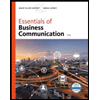
Essentials of Business Communication (MindTap Cou...
Business
ISBN:9781337386494
Author:Mary Ellen Guffey, Dana Loewy
Publisher:Cengage Learning
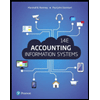
Accounting Information Systems (14th Edition)
Business
ISBN:9780134474021
Author:Marshall B. Romney, Paul J. Steinbart
Publisher:PEARSON
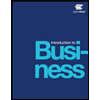
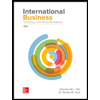
International Business: Competing in the Global M...
Business
ISBN:9781259929441
Author:Charles W. L. Hill Dr, G. Tomas M. Hult
Publisher:McGraw-Hill Education
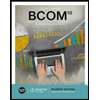
Related Questions
- The XYZ Bank sets up a temporary location after the bank bolding aroyed by a teftate the expenses OA direct loss OB. indirect loss OD. proximate causearrow_forwardQuestion 9 Donald puts a lot of money into a bucket and gives Bernie a power of appointment over the money in the bucket. Bernie has the power to distribute that money only to himself, his creditors, his estate, or his estate's creditors. What is the correct name for his power of appointment? It is a/an: General power of appointment Limited power of appointment Question 10 True or False. The spousal consent rules for the annual exclusion require the non-donor spouse to consent to all gifts made by the donor spouse in that year; he or she cannot select which gifts he or she will join and which he or she will not. True Falsearrow_forward(Topic insurance act ) What are the key terms and clauses that are typically included in a Marine Policy?"arrow_forward
- Briefly Explain. 2-3 sentences Risk Associated with Manufacturing, Trading and Service Concerns 1. Market Risk - Product Risk Complexity Obsolescence Research and Development Packaging Delivery of Warranties - Competitor Risk Pricing Strategy Market Share Market Strategy 2. Operating Risk Process Stoppage Health and Safety After Sales Service Failure Environmental Technological Obsolescence Integrity: Management Fraud Employee Fraud Illegal Acts 3. Financial Risk Interest Rates Volatility Foreign Currency Liquidity Derivative Viability 4. Business Risk Regulatory Change Reputation Political Regulatory and Legal Shareholder Relations Credit Rating Capital Availability Business Interruptionsarrow_forwardPersonal Selling (Company Background) 1. What is the role of personal selling in a maunfacturing & distribution companyarrow_forwardSubject: Prince Georges County Maryland. Need the following answered - Brief introduction to the ACFR - Highlight the total revenue for the fiscal year - Highlight the total expenditures - Mention the net position at year-end - Include a note on any major capital projects or debt issuance - Present the specific item of interest you found in the ACFR report - Discuss its significance or impact on the county's finances - Include relevant figures or percentages to quantify the importance - Provide a graphical representation if possible (e.g., a bar chart or pie chart to illustrate budget allocation or revenue sources)arrow_forward
- Environmental analysis (maximum 400 words across all factors) 1. The PEST(EL) analysis highlights various macro-level environmental factors. Consider the macroenvironment for the Banking Industry and identify and analyze those factors that are currently or likely to affect your industry. If certain factors are more important, please elaborate on those. Please provide detail on the key factors and how you expect that they might affect your industry in the future.arrow_forwardBackground on the article:In the construction industry, competitive bidding is used for various procurement routes available for satisfyingclients’ construction needs. These include traditional procurement via design-bid-construct, and the nontraditional ones such as the design-and-build, management contract, and build-own-operate-transfer. Though,it should be noted that contractors do not always bid for every job that comes along but select from a continuallychanging array of potential projects. Therefore, competitive bidding in construction is concerned with contractorsmaking strategic decisions regarding project selection whether or not to bid for a job and determine bid price ifcontractors opt to bid.It has been found in many studies that there are differences in the ranking of factors that contractors considerwhen making bid/no-bid and mark-up decisions. This suggests that contractors’ bidding decisions aredependent on many individual firm-specific characteristics, including some…arrow_forwardQUESTION 1 Consider the ACCC's assessment of Bingo's proposed acquisition of Dial-a-Dump. The pdf file is in the class recordings folder. The ACCC only approved the merger under the condition that Bingo would sell parts of its business in the B&D Waste Collection Services segment of the market. O True O Falsearrow_forward
- The Gray Ferrari I t all got started when Robert L. Johnson had dinner at Mr. K’s Chinese restaurant with Michael Jordan of the Washington Wizards and David Falk, the leading sports agent. When the discussion turned to cars, Johnson mentioned his interest in getting a Ferrari. Both Falk and Jordan recommended their respective dealers but Johnson found the going tough. Only a select number of Ferraris are made annually, and the automaker limits how many are sold through U.S. dealers to about 1,000 units. In practice, anyone placing an order would have to wait over two years for delivery for a car that would cost $200,000 to $300,000 depending on the model. A New Jersey dealer had a Ferrari available, but, at $300,000, Johnson felt the price was too high. Michael Jordan’s dealer had a 360 Modena available for $160,000. Although he bought it, it was not exactly what he had wanted because the Modena is not a convertible. Franco Nuschese, the owner of Georgetown’s…arrow_forwardRequired: • Identify the issue/problem • Prepare Alternative Courses of Action (3-5 ACA) • Recommend the best course of action.arrow_forwardManagers of Best Buy had just implemented an e-commerce platform to expand their business in terms of customer base.Best Buy is a clothing retail store that offers value for money on clothing items for the family. Based on this, complete thetasks that follow.Question 1 Elaborate on the e-commerce model adopted by Best Buy and further explain ANY FOUR (4) benefits of thee-commerce model to the retail company.Question 2 Discuss ANY FIVE (5) popular payment methods for Best Buy to include in the e-commerce platform.arrow_forward
arrow_back_ios
SEE MORE QUESTIONS
arrow_forward_ios
Recommended textbooks for you
 BUSN 11 Introduction to Business Student EditionBusinessISBN:9781337407137Author:KellyPublisher:Cengage Learning
BUSN 11 Introduction to Business Student EditionBusinessISBN:9781337407137Author:KellyPublisher:Cengage Learning Essentials of Business Communication (MindTap Cou...BusinessISBN:9781337386494Author:Mary Ellen Guffey, Dana LoewyPublisher:Cengage Learning
Essentials of Business Communication (MindTap Cou...BusinessISBN:9781337386494Author:Mary Ellen Guffey, Dana LoewyPublisher:Cengage Learning Accounting Information Systems (14th Edition)BusinessISBN:9780134474021Author:Marshall B. Romney, Paul J. SteinbartPublisher:PEARSON
Accounting Information Systems (14th Edition)BusinessISBN:9780134474021Author:Marshall B. Romney, Paul J. SteinbartPublisher:PEARSON
 International Business: Competing in the Global M...BusinessISBN:9781259929441Author:Charles W. L. Hill Dr, G. Tomas M. HultPublisher:McGraw-Hill Education
International Business: Competing in the Global M...BusinessISBN:9781259929441Author:Charles W. L. Hill Dr, G. Tomas M. HultPublisher:McGraw-Hill Education

BUSN 11 Introduction to Business Student Edition
Business
ISBN:9781337407137
Author:Kelly
Publisher:Cengage Learning

Essentials of Business Communication (MindTap Cou...
Business
ISBN:9781337386494
Author:Mary Ellen Guffey, Dana Loewy
Publisher:Cengage Learning

Accounting Information Systems (14th Edition)
Business
ISBN:9780134474021
Author:Marshall B. Romney, Paul J. Steinbart
Publisher:PEARSON


International Business: Competing in the Global M...
Business
ISBN:9781259929441
Author:Charles W. L. Hill Dr, G. Tomas M. Hult
Publisher:McGraw-Hill Education
